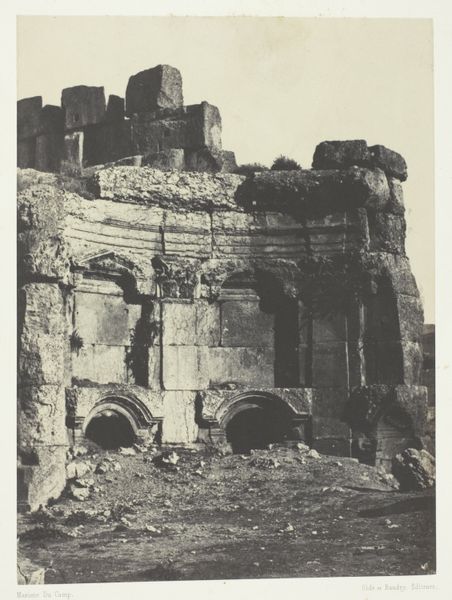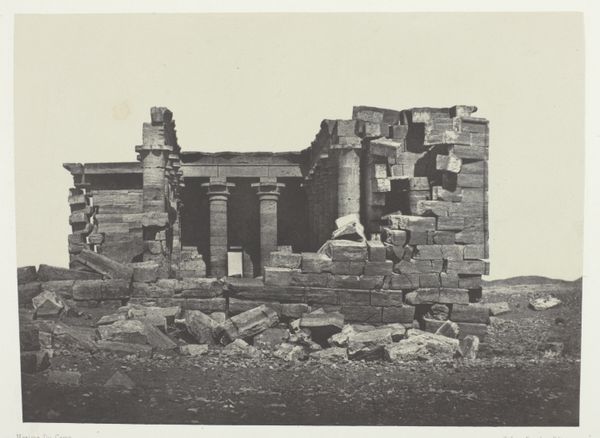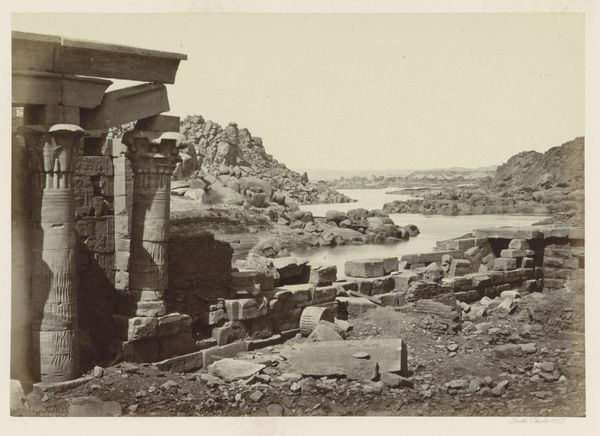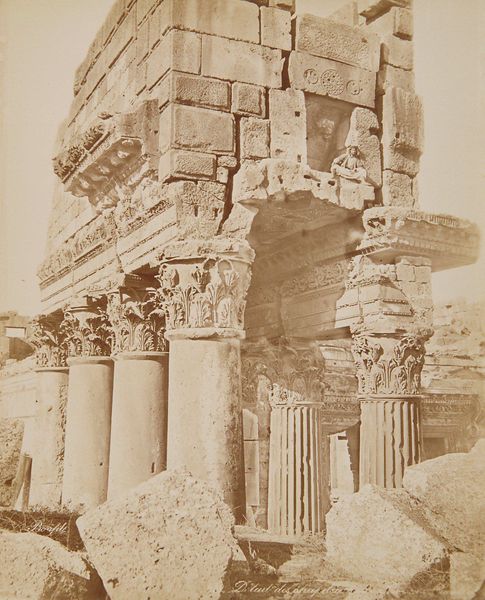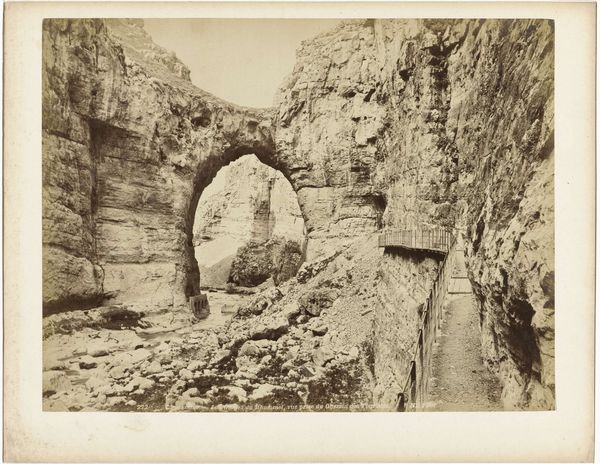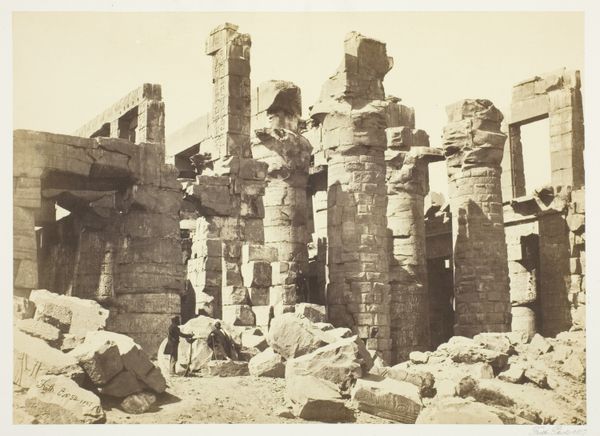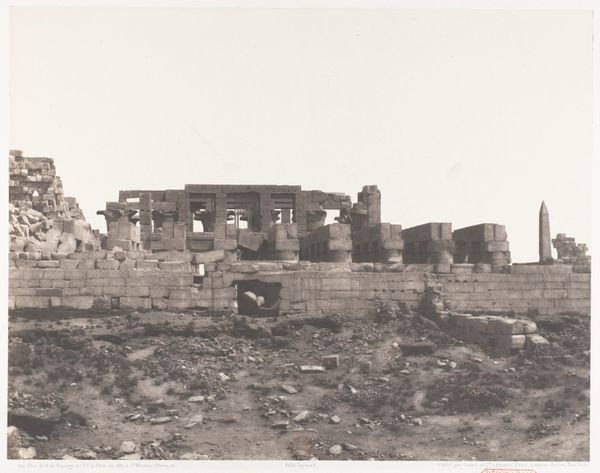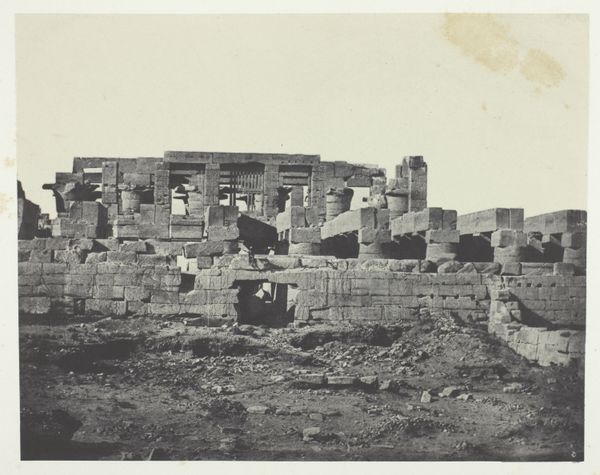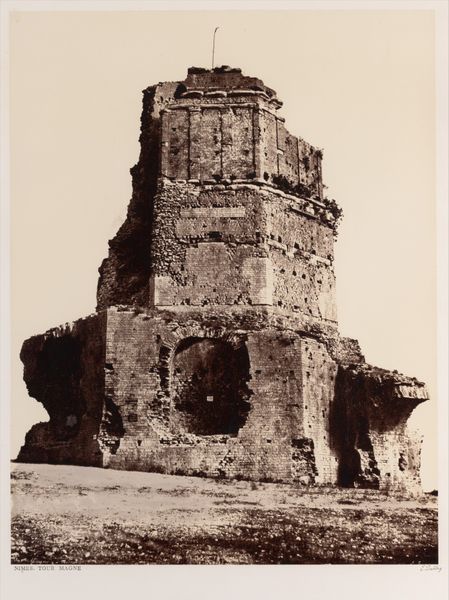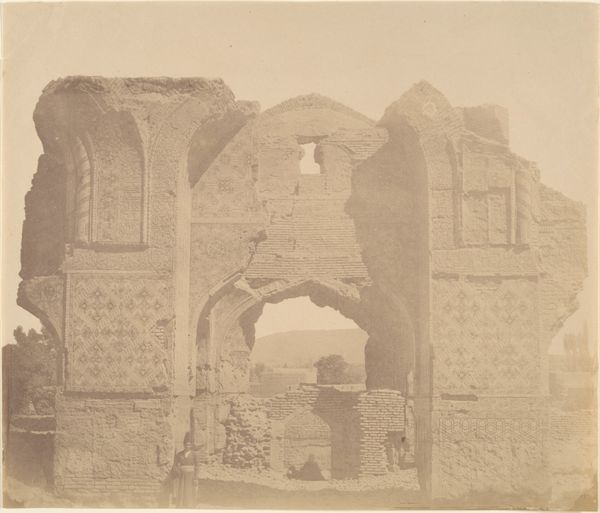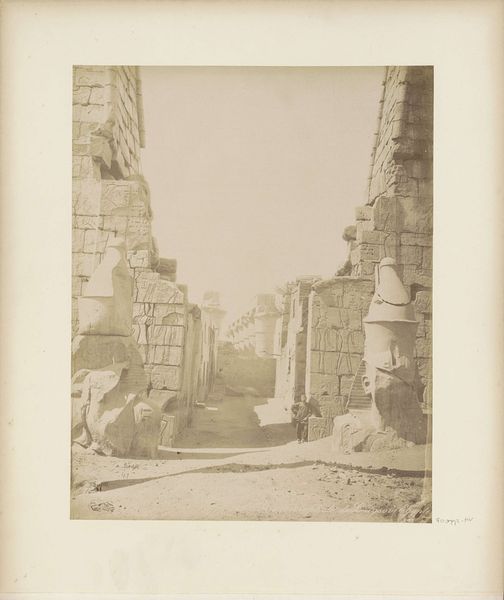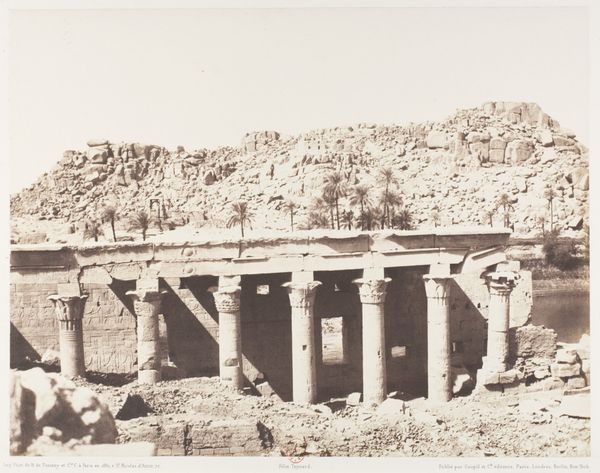
print, photography, site-specific, architecture
# print
#
landscape
#
photography
#
ancient-mediterranean
#
site-specific
#
academic-art
#
architecture
Dimensions: Image: 8 5/8 × 6 1/2 in. (21.9 × 16.5 cm) Mount: 12 5/16 × 18 11/16 in. (31.2 × 47.5 cm)
Copyright: Public Domain
Maxime Du Camp captured this photograph of the Hémicycle at Baalbek using a paper negative, sometime in the mid-19th century. Here, the arch becomes a potent symbol. The arches of Baalbek, once majestic entrances and vaults, now stand as silent witnesses to the passage of time. In ancient Roman architecture, the arch symbolized triumph and imperial power. Think of the Arch of Titus in Rome, commemorating victory, or triumphal arches erected to honor emperors. These arches, like those in Baalbek, were not merely structural elements; they were powerful statements of dominance and order. Yet, time erodes these assertions. The broken stones and crumbling facades of the Hémicycle speak to the impermanence of human achievement. This evokes a sense of melancholic reflection. The image captures a moment of ruin, inviting viewers to contemplate the cyclical nature of history. It stirs a deep, subconscious recognition of mortality and the ephemeral nature of power.
Comments
No comments
Be the first to comment and join the conversation on the ultimate creative platform.
